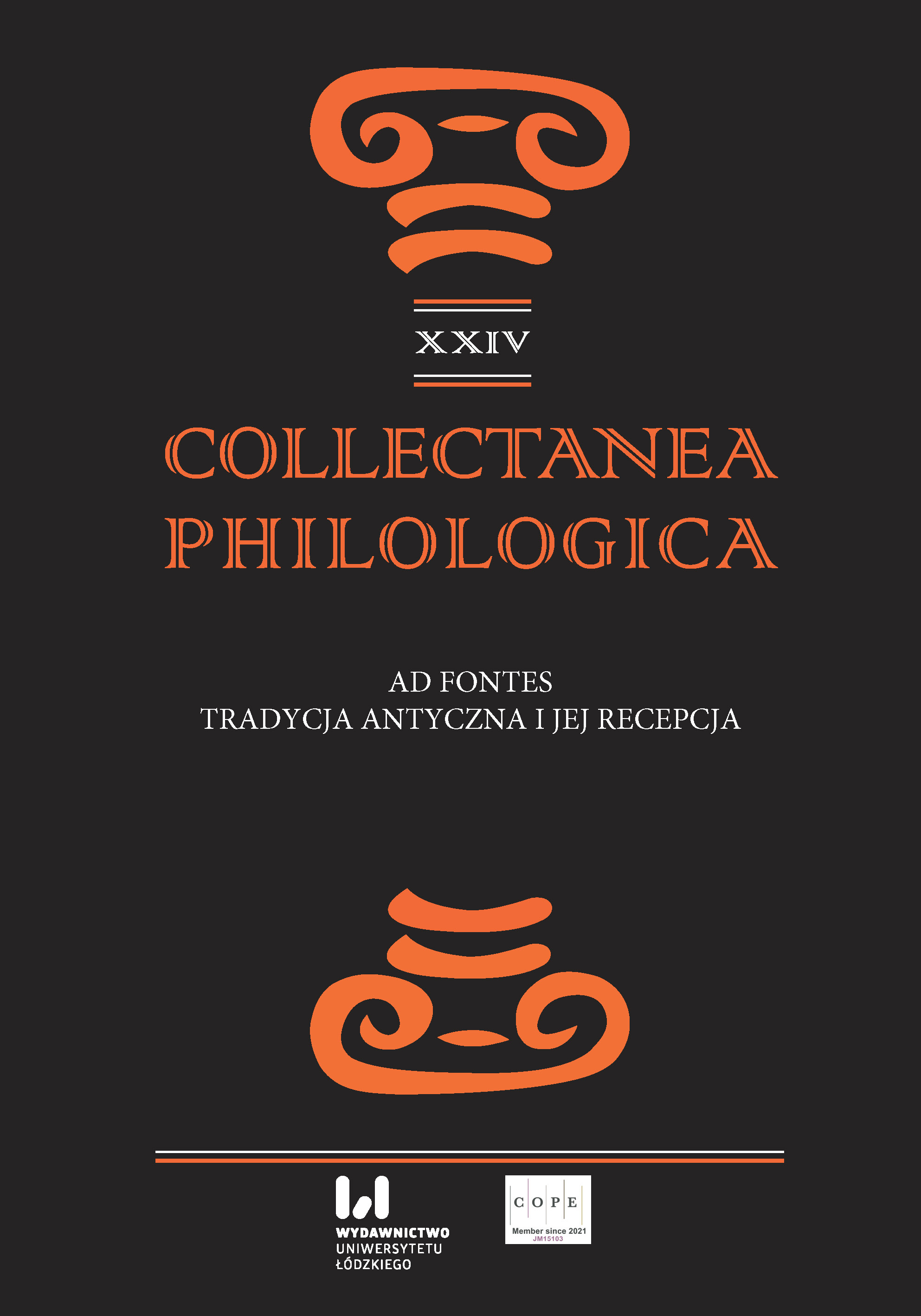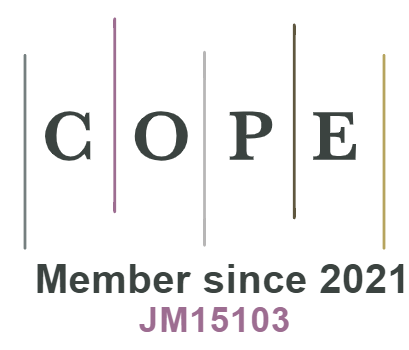Reception of the Myth of Minyas’ Daughters in the Novel “Frenzy” by Percival Everett
DOI:
https://doi.org/10.18778/1733-0319.24.13Keywords:
Minyas’ daughters, reception, myth, Dionysus, Percival EverettAbstract
This paper deals with the myth of Minyas’ daughters in the novel Frenzy by Percival Everett, a Distinguished Professor of English at the University of Southern California. He has brought forward a new interpretation of that myth in his book. The main theme is the story of god Dionysus based on Euripides’ Bacchae to which the author adds other mythes. References to Ovid, Aelian and Antoninus Liberalis can also be found.
References
Antoninus Liberalis. (1774). Metamorphoseon. G. Xylandrus, Th. Munckerus. (eds.). Lugdunum Batavorum.
Google Scholar
Bakola, E. (2016). Textile Symbolism and the ‘Wealth of the Earth’: Creation, Production and Destruction in the ‘Tapestry Scene’ of Aeschylus’ Oresteia (Ag. 905–978). W: Harlow, M., Nosch, M.-L. and G. Fanfani (eds.) Spinning Fates and the Song of the Loom: the Use of Textiles, Clothing and Cloth Production as Metaphor, Symbol and Narrative. Oxford. 115–136.
Google Scholar
Dorris, R. (2013). Frenzy. Framing Text to Set Discourse in a Cultural Continuum. W: Mitchell, K.B., Vander, R.G. (red.). Perspectives on Percival Everett. Missisipi: University Press of Missisipi. 35–59 https://doi.org/10.14325/mississippi/9781617036828.003.0003
Google Scholar
DOI: https://doi.org/10.14325/mississippi/9781617036828.003.0003
Elian. (1870). Varia Historia. R. Hercher (ed.). Lipsiae: Teubner.
Google Scholar
Eurypides. (2007). Eurypides. Tragedie, tom IV. Przeł. J. Łanowski. Warszawa: Prószyński i S-ka.
Google Scholar
Everett, P. (1990). For Her Dark Skin. Seattle: Owl Creek Press.
Google Scholar
Everett, P. (1997). Frenzy. Saint Paul, Minnesota: Graywolf Press.
Google Scholar
Harlow, M., Nosch, M.-L. (red.). (2016). Spinning Fates and the Song of the Loom. Oxford and Philadelphia: Oxbow Books. 115–136.
Google Scholar
Jurewicz, O. (red.) (2000). Słownik grecko-polski, t. I. Warszawa: Wydawnictwo Szkolne PWN.
Google Scholar
Kerényi, K. (2002). Mitologia Greków. Przeł. R. Reszke. Warszawa: Wydawnictwo KR.
Google Scholar
Kerényi, K. (2008). Dionizos. Archetyp życia niezniszczalnego. Przeł. I. Kania. Warszawa: Wydawnictwo Aletheia.
Google Scholar
Lovén Larsson, L. (2013). Textile production, female work and social values in Athenian vase painting. W: Schallin, A.L. (red.). Perspectives on ancient Greece. Papers in celebration of the 60th anniversary of the Swedish Institute at Athens. „Acta Instituti Atheniensis Regni Sueciae”, series in 8o; 22. Stockholm: Svenska Instutitet i Athen. 135–151.
Google Scholar
Muller, S. (2014). „Women and textile manufacture in classical Athens”. ANU Undergraduate Research Journal 6. 23–36 https://doi.org/10.22459/AURJ.06.2014.04
Google Scholar
DOI: https://doi.org/10.22459/AURJ.06.2014.04
Ovidius. (1821). Metamorphoses. G.E. Gierig, J. Jahn (eds.). Lipsiae: Teubner.
Google Scholar
Szahaj, A. (1996). „Co to jest postmodernizm?” Ethos 33–34. 63–78.
Google Scholar
Walińska, M. (2011). „Szyfr, kod i konwencja. Staropolskie sposoby ‘mówienia mitologią’”. Napis XVII. 97–110 https://doi.org/10.18318/napis.2011.1.9
Google Scholar
DOI: https://doi.org/10.18318/napis.2011.1.9
Wesołowska, M. (2013). „Mit o Orfeuszu i Eurydyce w powieści Frenzy Percivala Everetta”. Roczniki Humanistyczne 61(3). 93–100.
Google Scholar
Downloads
Published
How to Cite
Issue
Section
License

This work is licensed under a Creative Commons Attribution-NonCommercial-NoDerivatives 4.0 International License.












